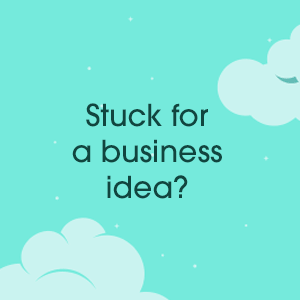How women-led SaaS startups leverage AI and automation for growth
Running a SaaS startup can sometimes feel like living in constant motion. You’re often juggling customer demands, product updates, and growth strategies. However, to truly grow, you need the right systems in place.
That’s where AI and automation for SaaS startups becomes a necessity. AI and automation can help you spot patterns in churn, predict customer behavior, and help teams act before problems get out of hand.
You can also build repetitive processes that work in the background, like onboarding emails, follow-up reminders, reporting, and internal task assignments.
In this article, we’ll explore what AI and automation for SaaS startups actually means, why women-led SaaS startups need AI and automation, and how these founders are applying it to grow smarter, faster, and more sustainably.
Let’s get started.
AI and automation for SaaS startups explained
AI and automation in SaaS means using smart software and automated systems to scale your business. In 2024, 85% of industry respondents have agreed that AI-driven automation will be critical in delivering enhanced productivity and efficiency. Here’s how AI helps:
- It encompasses technologies like predictive analytics that anticipate user behavior.
- includes personalization engines that tailor experiences for each customer.
- AI can also involve chatbots that handle routine support queries without human intervention.
In-fact, AI chatbots were the second fastest-growing AI category in 2025 with a 252% year-on-year growth rate. This highlights how rapidly these tools are being adopted by startups to improve customer engagement.
Additionally, some automation tools such as Zapier or UiPath can leverage robotic process automation (RPA) which uses software “bots” to mimic repetitive human tasks, such as:
- Updating CRM records.
- Sending onboarding emails.
- Generating weekly user activity reports.
- Following up with leads.
- Creating invoices.
The results from using such tools are often tangible. They can lead to faster onboarding, lower churn, and higher customer lifetime value. In 2025 AI-related technologies were projected to attract around $200 billion, half of it from the U.S. alone.
Importantly, many AI and automation solutions are now low-code or no-code, making them easily accessible.
Now, let’s take a look at why AI and automation for SaaS startups is important for women founders.
Why women-led SaaS needs smarter systems
Women-owned businesses are a driving force in the U.S. economy. They account for 39.2% of all enterprises and employ 12.9 million workers, generating $3.3 trillion in annual revenue.

Image via Wells Fargo
Despite this impressive growth, women-led companies still face structural challenges that make scaling SaaS startups harder than their male-led counterparts. The main reasons include:
- Limited access to venture capital restricts growth opportunities. For instance, in 2024, only 2.3% of global VC funding went to female-only founding teams, compared to 83.6% for all-male founding teams.
This funding gap forces women-led SaaS startups to do more with less, making it harder to scale or invest in new initiatives.

Image via Founders Forum Group
- Even with strong leadership traits like empathy, collaboration, and a product-led mindset, women founders hit capacity limits. Human intuition alone cannot manage repetitive or analytically heavy processes at scale, which is where AI and automation can step in.
- Women SaaS founders often face bias when pitching investors, negotiating partnerships, or being taken seriously by clients. For example, following failure, women are 22.5% less likely to start another VC-backed startup compared to men. Among those who do, women raise 53.3% less capital following the failure.
This means women founders spend extra time proving their expertise, advocating for their product, or building trust, which can feel mentally draining and diverts focus from growth.
This is why AI and automation for SaaS startups is crucial for growth. Let’s explore how women-led startups are using these tools.
How women-led SaaS startups use aI and automation: Five key areas for growth
AI and automation is helping women SaaS founders execute complex workflows, engage customers, and scale their operations. Here’s where it makes the biggest impact:
1. Onboarding and Activation
For early-stage users, first impressions matter. You can leverage AI and automation for SaaS startups to design personalized onboarding journeys that respond to individual behavior. Instead of manually tracking which users drop off, AI and automation does the following:
- Behavior-triggered messages follow each user’s actions, sending prompts when they miss a step.
- Chatbots answer common questions instantly, so users don’t wait for help and support teams aren’t overloaded.
Additionally, you can use tools to help you create an onboarding checklist. This will help reduce user confusion and improve activation rates. It’s most critical when launching a new product, rolling out major updates, or trying to standardize the onboarding experience across many users.
2. Customer success and feedback loops
Customer success is about ensuring users achieve their desired outcomes with the product. Feedback loops are mechanisms for collecting, analyzing, and acting on user input to improve the product or experience continually.
Together, they create a cycle where insights drive actions, which can help improve retention. Here’s how AI and automation can help:
- Predictive Analytics: AI models analyze user behavior to anticipate churn or disengagement. For example, you can use Gainsight or ChurnZero to flag accounts likely to drop off so the team can reach out to them early. You won’t need a large customer success team for this.
- Customer 360 View: AI consolidates all touchpoints like emails, support tickets, product usage, into a single dashboard. You can use tools like HubSpot or Salesforce Einstein to personalize outreach.
- Feedback Aggregation: AI can analyze surveys, NPS (Net Promoter Score) responses, or product usage data to uncover trends. Platforms like Typeform + Zapier or Qualtrics can help automate this analysis.
Another important way you can gather feedback on your product is at the launch stage. To do this, you should publish your public roadmap online.
This roadmap helps collect and organize user feedback by showing customers what’s planned and letting them vote or comment on features. It also builds trust and engagement, since users can see their input directly shaping the product’s direction.
3. Business efficiency and operations
AI and automation for SaaS startups extend beyond customer-facing workflows. Administrative tasks that once consumed hours can now be automated:
- You can draft and send invoices, reminders, and manage revenue forecasts.
- Summarize internal updates from Confluence or Jira before meetings using recap agents.
- You can also hire a personal assistant on platforms like Wishup, which offer skilled assistants for over 50 tasks, including scheduling meetings, managing emails, updating CRM systems, bookkeeping, research, and data entry.
4. Marketing and growth automation for saas
Women-led SaaS startups often need to scale without expanding CS or tech teams and burning through budgets. Some of the most critical areas include:
- Lead Segmentation and Personalized Outreach: Tools like HubSpot AI or Salesforce Einstein can analyze user behavior to send automated, tailored emails to high-value prospects.
- Content Generation: You can use generative AI to write ad copy and create images. For instance, AI image generators, which had a 441% YoY growth rate in 2025, can produce high-quality visuals for campaigns at scale.
- Inbound Workflows and Lead Nurturing: Tools such as Wyzard.ai or Drift help capture high-intent visitors, trigger automated sequences, and route qualified leads directly to the CS team.
5. Learning and Upskilling
For teams that are small but growing, continuous learning can’t be ignored. AI and automation streamline training by assigning personalized learning paths and tracking progress. This can be done with tools such as Docebo.
You can also automatically design personalized certificates and issue them to your employees using online tools like Adobe and Canva. This helps them feel a sense of achievement and boosts morale.
Learning and upskilling ensure employees’ product knowledge is consistent, and teams remain efficient. In the long run, continuous learning reduces errors and frees founders to focus on strategic growth, all without adding headcount.
Scale your SaaS startup in 2026
There’s no doubt that women founders face the challenge of scaling with limited resources, such as funding or small teams. However, AI and automation for SaaS startups can specifically help you handle repetitive tasks, onboard users smoothly, and respond to customer needs faster.
It also helps teams learn, upskill, and make smarter decisions without burning out. When you automate your business workflows, you can focus more on growth. So, go ahead and explore how AI and automation can help you scale your SaaS startup in 2026.




